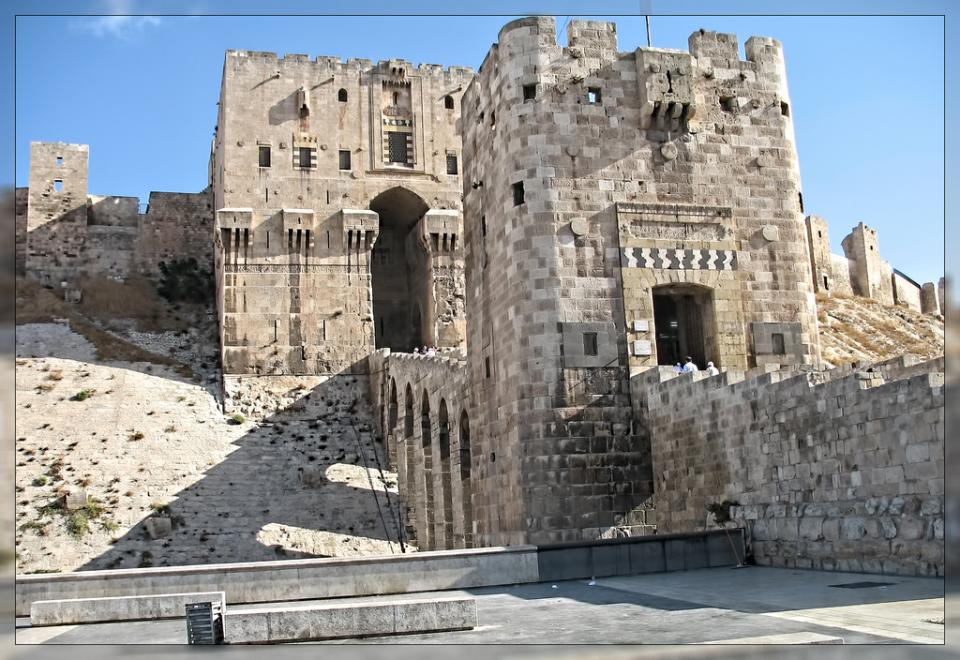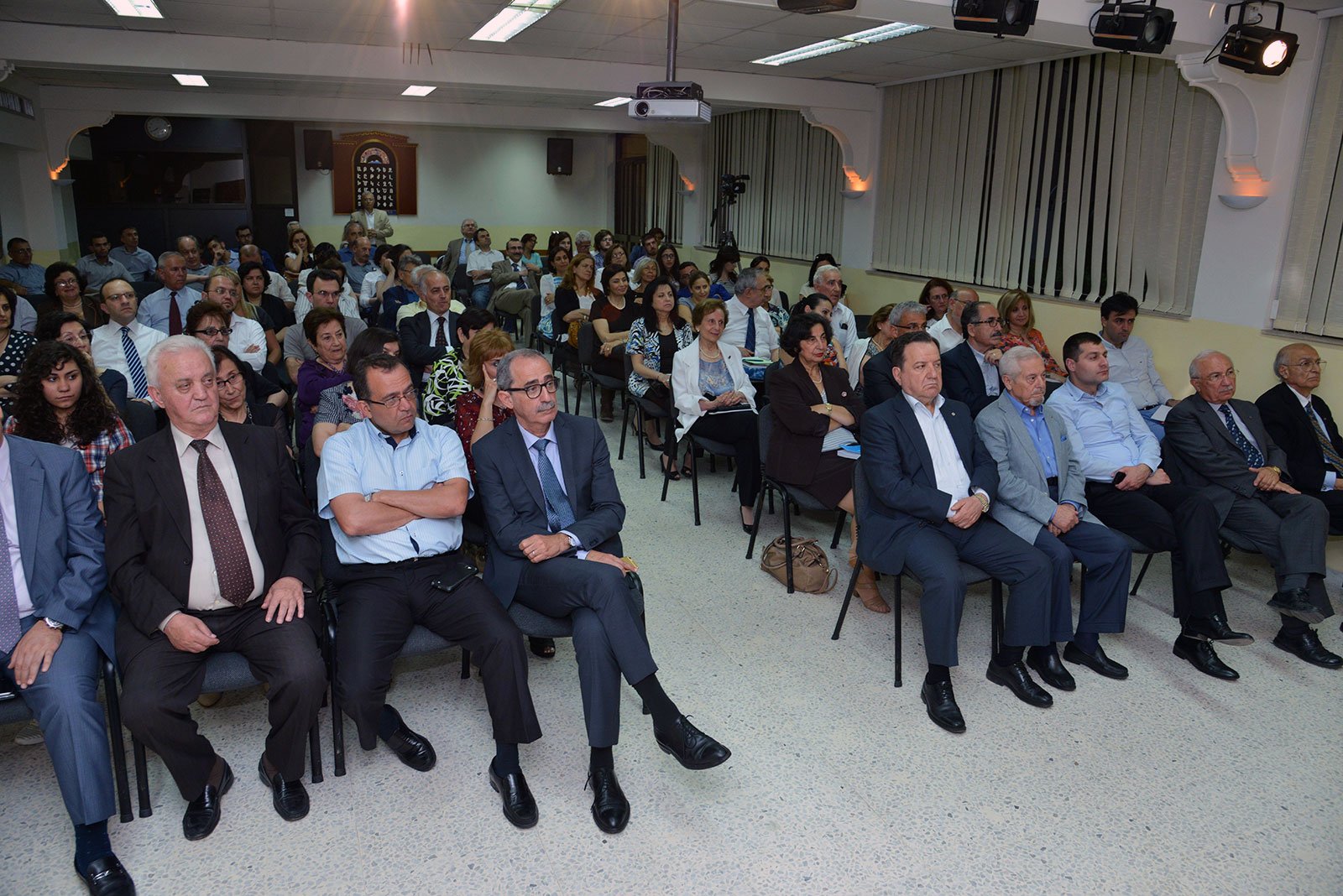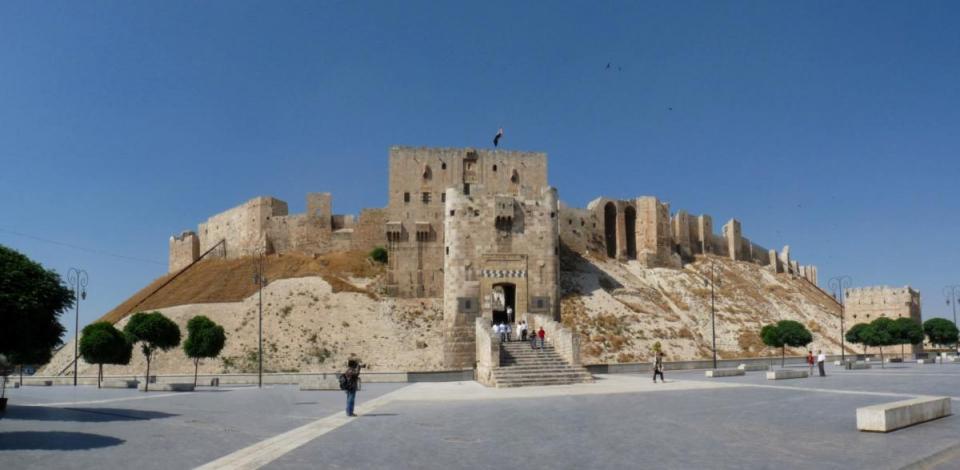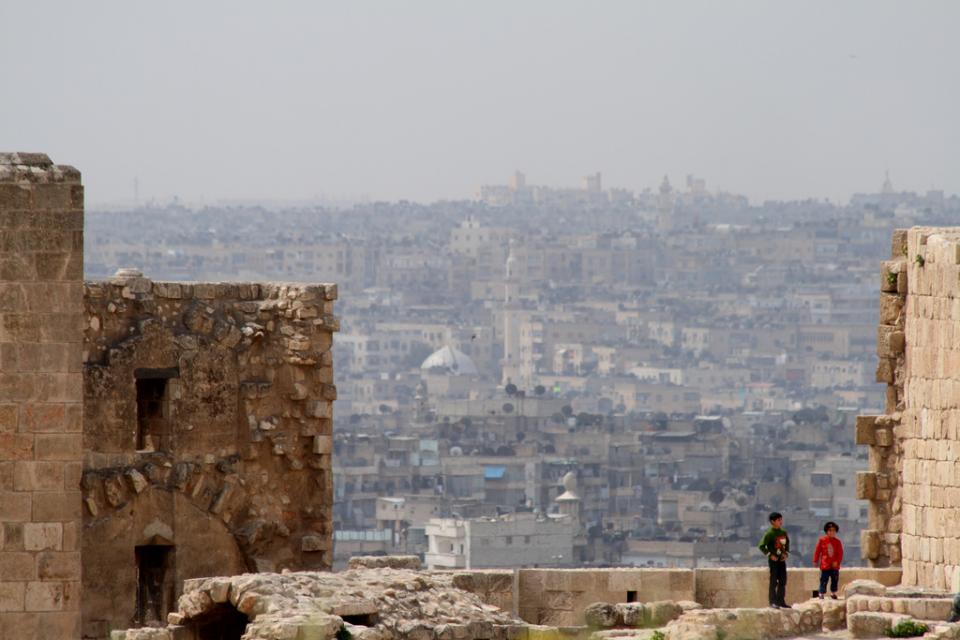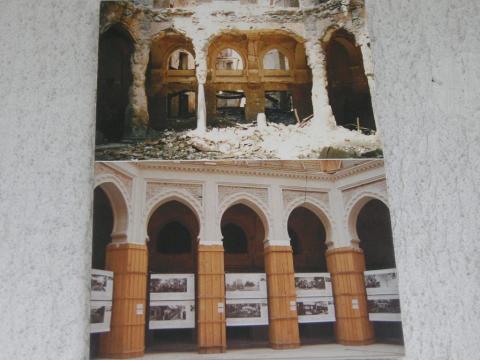Sooner or later the war in Syria will finish and the urgent need for reconstruction will arise. While the process should be structured, it should also involve – in both planning and implementation – the original residents, many of whom are now refugees. However, the views of local and international professionals, especially those with relevant experience, remain vital to any effective strategy. This survey intends to capture these views and preserve them for consideration during the reconstruction process. The survey can be filled in either in Arabic or English.
read moreBlog
CCNR Fellow presents The Aleppo Project in Beirut
by The Aleppo Project on June 10, 2015Holbrooke Fellow Armenak Tokmajyan participated on behalf of CCNR’s “Aleppo Project” team at a four-day conference at Haigazian University located in Beirut, Lebanon, the heart of the Middle East. The event covered a wide range of issues related to Syrian modern and contemporary history, art, literature, conflict and post-conflict reconstruction.
Armenak’s presentation “Reconstructing Aleppo” focused on one of the main questions of the Project: “Why is it important to think about reconstruction in Aleppo in the midst of war?” To answer this question, he briefly reviewed some aspects of Beirut’s post-war (1991 and onwards) reconstruction process. Afterwards, he made some recommendations for Aleppo based on lessons learned from Beirut, receiving direct feedback from native Aleppeans attending the conference in the process.
As part of its work, the Aleppo Project team will launch a website to contain high quality maps and satellite images, publish several research papers documenting lessons learned from the reconstruction of Sarajevo and Beirut, collect survey data regarding issues important to Aleppeans, and encourage young Syrians to write for the upcoming website’s blog.
– See more at: http://ccnr.ceu.edu/article/2015-05-29/ccnr-fellow-presents-aleppo-project-beirut#sthash.eHRxTYI5.dpuf
read moreCall for Papers – دعوة للمشاركة
by The Aleppo Project on June 2, 2015To read the call in Arabic, please click here
لقراءة الدعوة بالعربية، الرجاء الضغط هنا
“The Aleppo Project” at the Central European University’s Center for Conflict, Negotiation and Recovery (CCNR) aims to capture information about the past of the Syrian city, document life in the city, analyze the conflict that is destroying it, and help residents plan for the future.
CCNR is developing a website where we will publish our studies and findings, but also document the “Aleppo experience”. We intend for this site to be an open collaboration and invite experts, residents, former residents or anyone with Aleppo-related experience to submit:
• Blog entries depicting day-to-day life in the city. Such entries can be creative or simply documents, and can include, photo essays, before and after war price lists, descriptions of how one conducts day-to-day chores (such as traveling from one side of the city to the other or buying groceries) etc.
• Academic articles and research papers in various disciplines, such as urban planning and architecture, tangible and intangible (cultural) heritage, civil administration, economics, development, and governance
• (Policy) recommendations for Aleppo now and post-conflict
• Views regarding how city planning and management was before the conflict and now
Please send contributions to [email protected], indicating whether you would like your name and/or contact and professional information published. Blog entries should be around 600 words. Academic papers can be any length. Policy papers should have a one-page overview, six-page summary and about 25 page report. Submissions can be in Arabic, Kurdish, or any other language spoken in Syria, as well as English and French.
read moreAleppo Weekly
by The Aleppo Project on June 1, 2015The Aleppo Weekly is a compilation of what CCNR staff found to be the week’s most compelling stories, images, videos, and other resources that provide information about the life in the Syrian city, analyze the conflict that is destroying it, and help residents plan for their future. The weekly follows topics of interest to the Center’s researchers, and has a special focus on those displaced from the city and others whose voices are rarely heard when it comes to peacemaking or reconstruction.
JUNE 1 – 7, 2015
Stories of the Week
From small-town N.H., a stream of relief to Syria
Syrian civilians trapped as ISIS launches new offensive
Residents in Syria’s Aleppo are using old buses as new barricades
Images of the Week

Videos of the Week
Amnesty International’s ‘Virtual reality Aleppo‘ street fundraising campaign
MAY 25 – 31, 2015
Stories of the Week
Save the Children CEO Justin Forsyth (@justinforsyth) tweeted on May 28: “Health systems have been devastated in #Syria. In Aleppo governate there used to be 5000 doctors, now 50. 37% of hospitals destroyed.” According to Save the Children, the “most vulnerable children are those who remain inside Syria, who risk death, illness, abuse and exploitation on a daily basis”. In Syria:
• More than 10,000 children have been killed; 5.6 million children need humanitarian aid.
• Inside Syria 3.5 million children have been forced from their homes.
• Nearly 2 million children have fled the country and are now living in over-stretched refugee camps or villages.
• Alost 3 million children are unable to go to school (2.3 million inside Syria, 685,000 refugees)
• 10 million people do not have enough to eat.
Syria: UN envoy condemns death of at least 70 civilians in Aleppo
Images of the Week
Government helicopters dropped barrel bombs on the city of al-Bab and in eastern neighborhoods of Aleppo [Getty Images]

MAY 18 – 24, 2015
Stories of the Week
According to Harper’s Magazine: Percentage of lights in Aleppo that have been extinguished since the beginning of the Syrian civil war: 97
A glimpse into current conditions in Aleppo: “Forgotten in Aleppo”
Images of the Week
Reuters Slideshow: “Children of Syria”
MAY 11 – 17, 2015
Stories of the Week:
Follow the work of volunteer emergency trauma surgeon David Nott, who traveled to Aleppo and northern Syria with UK NGO Syria Relief
Syrian child refugees use photography to help overcome trauma of war
Videos of the Week:
The video documentary of David’s work in the war zone
MAY 4 – 10, 2015
Stories of the Week
‘Voices of Syria:’ Survey offers an inside look at a worn-torn country [in Aleppo and Idlib] and its people. Follow this link or double-click on the icon below for the presentation:
“Female Scenes from the Syrian War”, an account of the experiences of the lives of women in wartorn Syria. Written by our Aleppo contact Zaina Erhaim, a Syrian journalist educated in Syria and at City University in London now working as the Syria project coordinator with the Institute for War and Peace Reporting. She lives in the opposition held areas in northern Syria.
Other interesting stories documenting life in Aleppo from her blog:
Civilians in the city of Aleppo, Syria are being subjected to appallinghuman rights violations committed by the Syrian government and many armed opposition groups:
Photos of the Week:
The aftermath of an air strike on Al-Fardous neighbourhood, 2 April 2015.

This underground playground in the opposition-controlled area of Aleppo city was established in late 2014 to provide private care for children orphaned by the conflict, 6 April 2015.

A child drinks spring water exposed following a missile attack on Qalaseh neighbourhood in Aleppo, 1 September 2014. Civilians in Aleppo face severe shortages in essential services such as electricity and water, as well as appalling sanitary conditions, with rubbish and sewage clogging the streets.

APRIL 27 – MAY 3, 2015
Story of the Week
Group of archaeologists and urban planning experts in Germany say that President Bashar al-Assad is already seeing dollar signs in the ruins of his country’s cities:
Photo of the Week

APRIL 20 – 26, 2015
Stories of the Week
Aleppo residents ‘left to fend for themselves’
Three years after Mahmoud and his family fled the war in [Aleppo] Syria, the young boy reflects on their new life in Sweden
Video of the Week
Barrel Bombing Campaign Intensifies in Aleppo, Syria
APRIL 13 – 19. 2015
Images of the Week
United Nations Institute for Training and Research: Damage Density in Aleppo

Pictures from the National Archive of Aleppo documenting therenovation of the Beylouny Mosque in Aleppo in 2007-2008.
Video of the Week
“We were thinking we were going to die every minute” – Twins from Aleppo share their Mediterranean ordeal
Children of war in Syria (Aleppo) hope for a life “without killings”
APRIL 6 – 12, 2015
Stories of the Week
A Trip Through Aleppo’s “Crossing of Death”
Syria: Communities besieged – Hundreds of thousands of civilians intentionally denied basic necessities such as food, water and medicine
Syria After Four Years of Mayhem
Images of the Week
Girls who survived what activists said was a ground-to-ground missile attack by forces of Syria’s President Bashar al-Assad, hold hands at Aleppo’s Bab al-Hadeed district April 7, 2015. REUTERS/Abdalrhman Ismail

MARCH 30 – APRIL 5, 2015
Stories of the Week
Syria’s war-scarred citadel of Aleppo: a history of cities in 50 buildings, day 2
Images of the Week
A child walks past a bus barricade erected to protect against snipers

Kids swimming in pools made by bomb craters

Videos of the Week
Reuters: Grief fills the streets of Aleppo:
Al Jazeera World follows the everyday lives of Aleppo residents. Includes 45 minute video “Death of Aleppo“, that captures the scale of human suffering and destruction in the historic city; but also the resilience of its citizens who battle daily as their city falls apart all around them.
read moreSPP Research Team Visits Sarajevo
by The Aleppo Project on February 11, 2015From February 3 to 7 a CCNR research team visited Sarajevo to see whether that city’s reconstruction held any lessons for the future rebuilding of Aleppo, Syria. Speaking with NGOs, international organizations, PhD researchers and others, the team emphasized that the ultimate goal was to avoid “reinventing the wheel,” ensure the voice of refugees and other marginalized communities is heard, and avoid pitfalls commonly present when large sums of money and many actors convene to rebuild. Topics included the reconstruction of heritage downtown sites, new commercial space, corruption issues, and housing for returnees; the team identified several procedural and political considerations that could prove useful once Syria reconstruction begins in earnest. – See more at: http://ccnr.ceu.edu/article/2015-02-11/spp-research-team-visits-sarajevo#sthash.xfen8KOi.dpuf
read more The Aleppo Project
The Aleppo Project